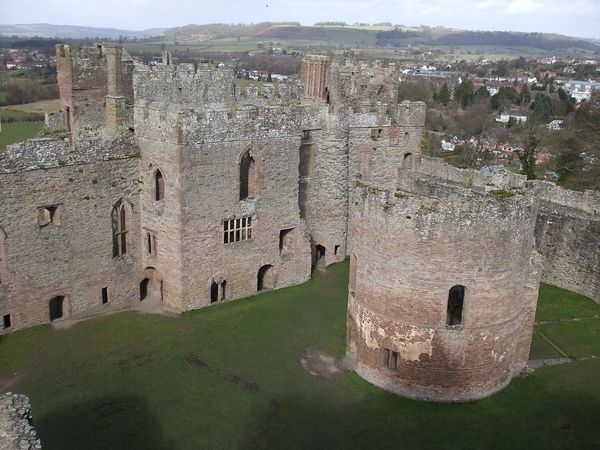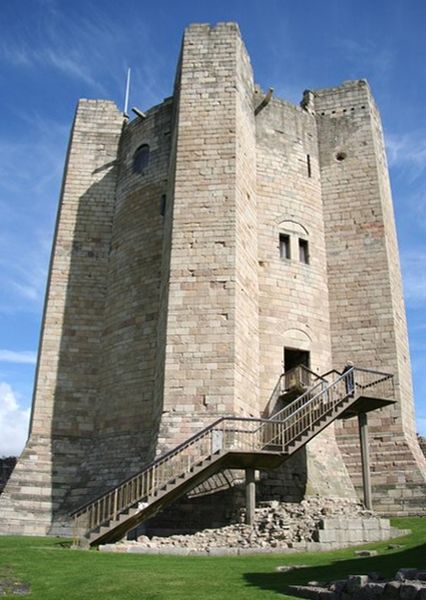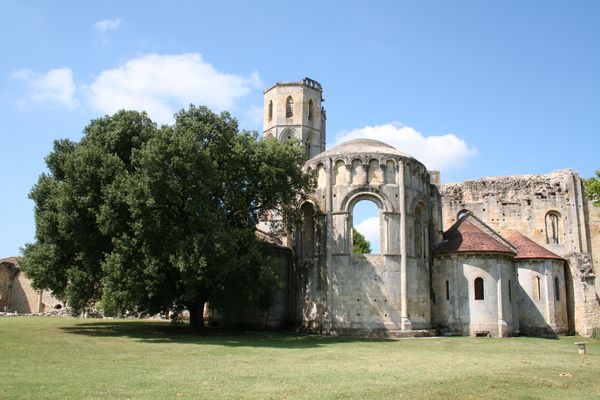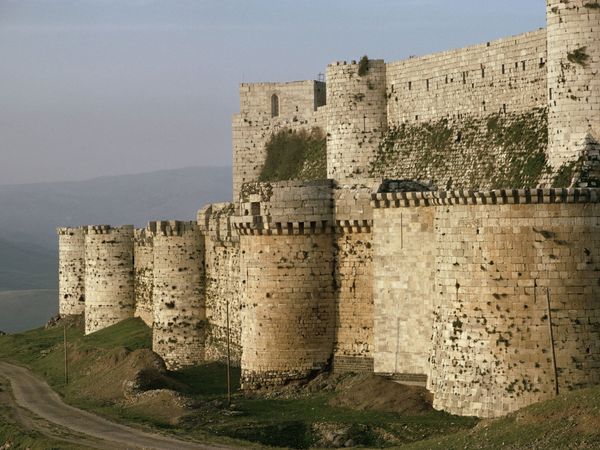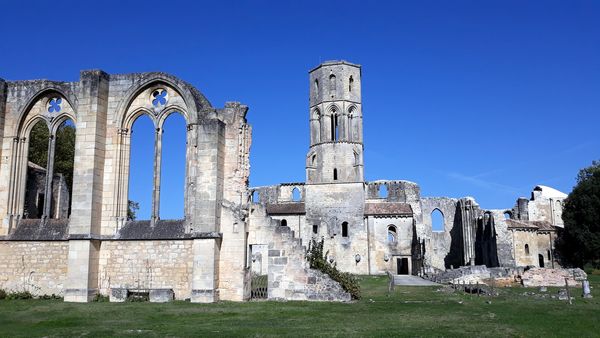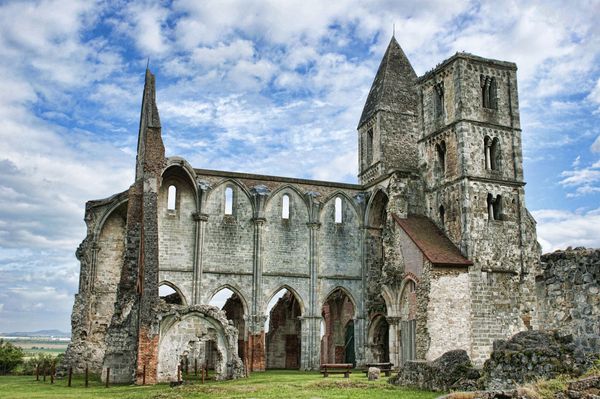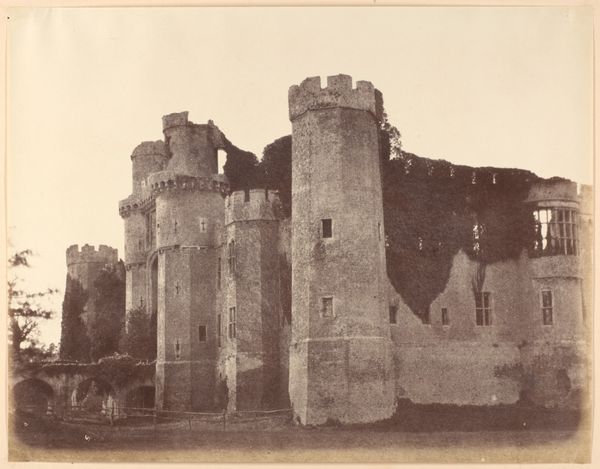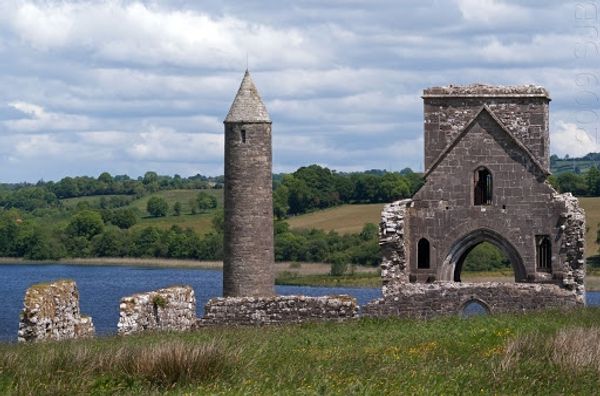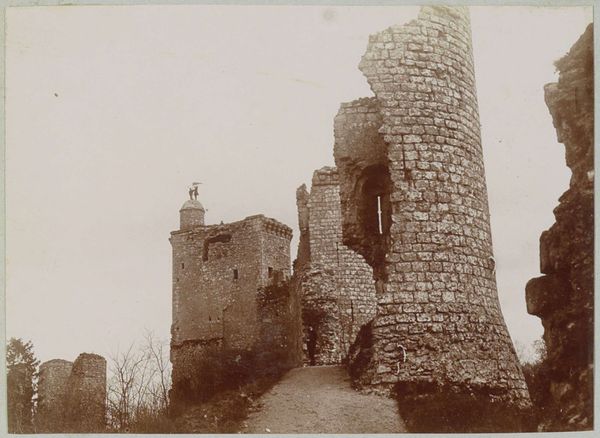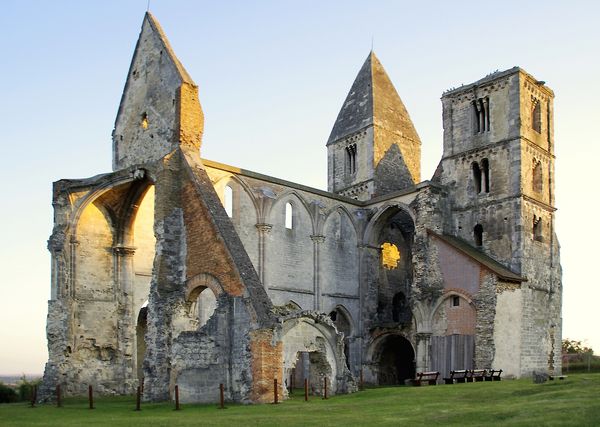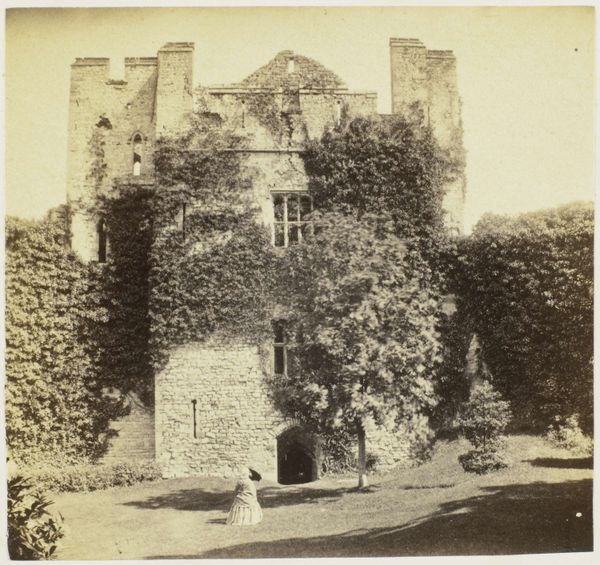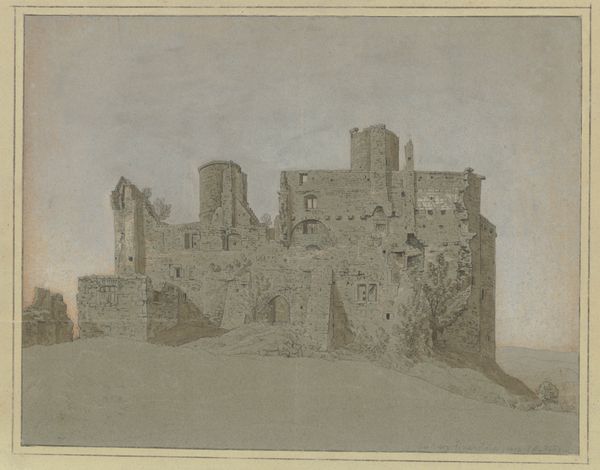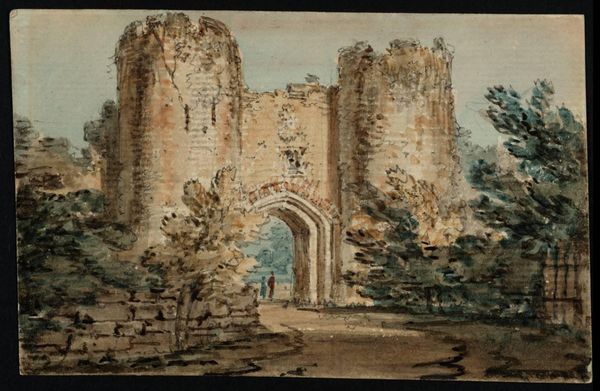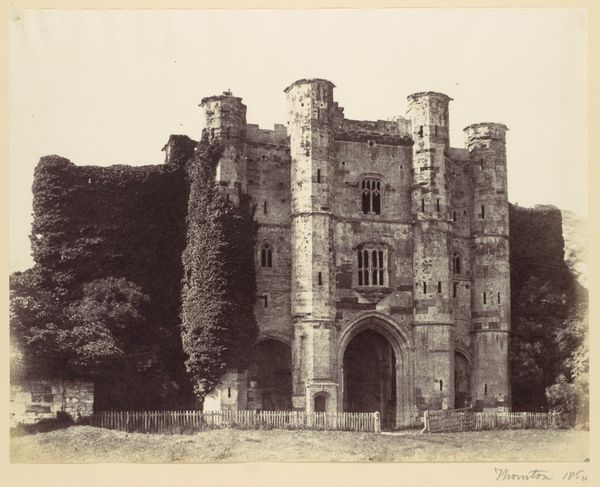
print, photography, architecture
# print
#
landscape
#
photography
#
romanesque
#
architecture
Copyright: Public domain
Editor: Here we have a photograph of Conisbrough Castle in England, dating back to 1066. It’s Romanesque architecture captured in what looks like a contemporary print. There’s a somber feel to it, viewing the castle in a ruined state, and I wonder what its significance is? What do you see when you look at this piece? Curator: What strikes me first is the dichotomy. This structure, originally built for strength, dominance, and longevity, is now humbled by time. Do you notice how the grassy mound it sits upon seems to be gradually reclaiming it, softening its harsh edges? That battle between nature and human intent is rich in symbolism. Editor: Yes, I do. I suppose I hadn't considered the symbolism of the grassy mound as nature reclaiming the site. What kind of deeper meanings would you say are at play? Curator: Consider the round tower—an echo of Romanesque design. Circles often represent cycles, eternity. The ruin, though, suggests an interrupted cycle, a broken promise of permanence. Think of the generations that lived, fought, and died within those walls. Their stories, now whispers carried on the wind. Editor: So, the image, while seemingly simple, becomes a visual representation of the passage of time and the fragility of human endeavors? Curator: Precisely. It invites us to contemplate our own place within that grand, cyclical narrative. What structures are we building today, and what stories will their ruins tell? The green vegetation could symbolize life persistently springing out even amidst the relics of what’s gone by, adding layers to that grand tale. Editor: It’s fascinating to think about architecture as a carrier of such potent cultural memory. It is making me consider photographing buildings in new ways now. Curator: Indeed! Remember, every image, every symbol, has the potential to unlock hidden histories and enduring truths about our shared human experience.
Comments
No comments
Be the first to comment and join the conversation on the ultimate creative platform.
